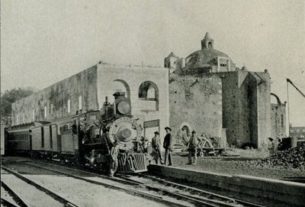To most of us, the term “German agent” conjures up the image of a heel-clicking Bundist swilling beer and sieg heiling as he attends his monthly meeting at Camp Siegfried. If his vintage is pre-WWI rather than pre-WWII, then the Sieg Heil! will be replaced by something like Kaiser Hoch!
What the terms do not evoke is the roistering figure of Pancho Villa, who would be as out of place among a group of spike-helmeted Prussian militarists, as Jesse Jackson at an Aryan Nations rally. Yet today there is strong circumstantial evidence that Villa was not only financed by the German imperial government, but that some of his military actions were explicitly designed to aid the Kaiser’s cause.
Before going into further detail, it is useful to examine the sequence of events that propelled Villa toward wishing to do maximum damage to the United States, and therefore being susceptible to German blandishments.
In the early days of the revolution, Villa had very good relations with Americans. On Christmas Eve of 1912 he escaped from the military prison of Santiago Tlatelolco in Mexico City. He had been imprisoned after being reprieved from a death sentence handed down by General Victoriano Huerta, the usurper who would overthrow Francisco Madero in February 1913.
That same month, Villa found himself in El Paso, living there in complete freedom and enjoying countless friendships with gringos. On March 9 he crossed the border with just 15 men and began a rising against the Huerta dictatorship. As noted, Villa has always liked Americans and the feeling was mutual. Among the many who swelled his ranks was a “foreign legion” composed of as colorful a group of adventurers as has ever been assembled under one standard.
Among them was the legendary John Reed (whose book, Insurgent Mexico, was about his service with the villistas), Oscar Creighton, a San Francisco bank robber called the “Dynamite Devil,” Sam Drebben a/k/a “the fighting Jew,” a Spanish-speaking machinist named Ben Turner, and Edward S. “Tex” O’Reilly, a hard-bitten rancher turned soldier-of-fortune, who would later serve in the Philippine Insurrection and the First World War.
Americans also manned Villa’s primitive air force, made up of four planes. The pilots, ex-barnstormers and every bit as colorful as their compatriots on the ground, answered to names like Mickey McQuire, Wild Bill Heath and Farnum T. Fish. It has even been claimed that the legendary Hollywood cowboy Tom Mix served with Villa’s forces, though this was denied by El Paso Journalist Dale L. Walker. According to Walker, the version of Mix being a ” villista” was the invention of a flack in his studio’s public relations office.
With the aid of these volunteers, Villa was able to team up with Venustiano Carranza and Alvaro Obregón and drive Huerta into exile in July 1914. But the fall of Huerta did nothing to solve the turbulence plaguing Mexico. Before the end of 1914 Villa had fallen out with Carranza and Obregón. Mexico was again plunged into civil war.
Carranza was installed in Mexico City as provisional president but it was Obregón who furnished the muscle.
Obregón, a self- made but highly skilled general, had studied the trench warfare tactics then prevailing on the Western Front of France. Armed with this expertise, he inflicted a series of defeats on Villa, driving him from central Mexico back into the northern sierra of Chihuahua. On October 19, 1914, the United States extended de facto recognition to Carranza.
To Villa, this was the vilest sort of betrayal. He had always been a friend to the gringos and this is how they were repaying him. A simple man, he didn’t understand the realpolitik which mandates that you recognize whoever seems to be more effectively in control of a country in chaos.
Villa’s anti-Americanism was further inflamed on November 2, 1915, when carrancista troops were allowed to cross U.S. soil to attack him in the rear at Agua Prieta, across the border from Douglas, Arizona. To add insult to injury, U.S. searchlights were deliberately focused on the villistas to make them easier targets for their enemies.
At least one influential American sympathized with Villa and understood his feelings. General Hugh L. Scott, who had many dealings with Villa, wrote that “The recognition of Carranza had the effect of solidifying the power of the man who had rewarded us with kicks and making an outlaw of the man who helped us.”
Though Villa sent Scott a telegram saying that he was the one honest man north of the border, that didn’t stop the villistas from killing 16 American mining engineers captured when they held up a train near Santa Isabel, Chihuahua, on January 10, 1914.
On March 9 came the infamous villista cross border raid into Columbus, New Mexico. The Mexicans attacked the 13th Cavalry, bringing back more than a hundred of its horses and mules, along with a heavy load of rifles and machine guns. The raiders also killed 26 civilians in Columbus.
What part did the Germans play in all this? At this point we must focus on the shadowy figure of Felix A. Sommerfeld, described by the prize-winning German historian Friedrich Katz as “one of the most interesting members of the shadowy army of agents, double agents, and lobbyists who swarmed like locusts over Mexico once the revolution had begun.”
Sommerfeld was a con man extraordinaire. Though he had fought against the revolutionary Boxers in China, he came to Mexico and convinced Madero that he was a revolutionary democrat. At the same time he was establishing close relations with the German government and certain U.S. business interests.
The latter were represented by a shady lobbyist name Sherbourne Hopkins, who was closely allied with Carranza. In what was undoubtedly a union of kindred spirits, Sherbourne befriended Sommerfeld, gave him money, and told him to go to Mexico and place himself at Carranza’s disposal. In Mexico, the fast-talking Sommerfeld so completely won Carranza’s trust that the latter delegated him to go to Chihuahua and spy on Villa.
This he did, but not for Carranza. All information gained on Villa went directly to the German government. In addition, he so ingratiated himself with Villa, that Villa game him an exclusive concession to import dynamite for his forces. For this activity, Sommerfeld pulled down a commission of 5,000 dollars a month.
In late 1915, a few months before the attack on Columbus, the U.S. Justice Department ascertained that 340,000 dollars had been paid into an account that Sommerfeld maintained in a St. Louis bank. The money came from an account in New York in the name of the German government.
Shortly after these transactions came to light, Sommerfeld closed the account. Where did the money go? Treasury sleuths learned that every penny of it had been paid to the Western Cartridge Company – arms suppliers for Villa.
When confronted by agents of the Justice Department, Sommerfeld demonstrated that he’d lost none of his gift of gab. Piously insisting that he had severed all relations with Villa after the U.S. recognized Carranza, he even sent Villa a telegram protesting the massacre of the 16 mining engineers.
At the same time, he was unable to explain why 340,000 dollars deposited in his account by the German government had ended up in the hands of Villa’s arms supplier. In addition, according to Carranza’s agents in the U.S., Sommerfeld continued to buy arms for Villa even after his interrogation by Justice Department agents.
The question inevitably arises as to who was using whom.
Pancho Villa was a revolutionary first and foremost and the fact that he may have received arms and financial aid from the Germans doesn’t transform him into an adherent of Kaiserism. Between the dominant Carranza-Obregón forces and the now hostile United States, Pancho Villa was in a very difficult spot. And if somebody offered to help him, he wasn’t about to require the would-be benefactor to submit to an ideological litmus test.
On at least one occasion he resisted the blandishments of the Germans. The German consul in Torreón, which Villa had recently captured, gave a lavish banquet for him and urged him to march on the Tampico oil fields.
With the capture of Tampico, German ships would land in the port and bring him money and arms. Villa appeared to consider the offer – then changed his mind and marched on Chihuahua.
In the final analysis, it appears that Pancho Villa was not so much a “German agent” – with all the sinister connotations that the term implies – as a man engaged in the age-old game of playing both ends against the middle.


